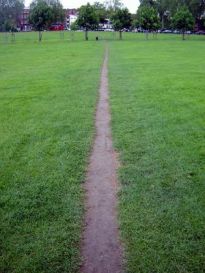Coastal and Littoral Studies
For more than a decade, coastal zone studies, including hydrographic survey-based mapping, have been growing in size, complexity and applications. With the growing need to better baseline and define t...
An overview of all columns published in earlier editions of Hydro International Magazine.

For more than a decade, coastal zone studies, including hydrographic survey-based mapping, have been growing in size, complexity and applications. With the growing need to better baseline and define t...

I’ve come to realise that explicit consciousness of hydrography’s importance to the 21st century’s world socioeconomic and environmental wellbeing resides with those involved professionally and ...

The accuracy of the work provides infinite gratification and continual satisfaction that a permanent record will guide hundreds of his fellow-seamen on their way. I read recently, and with some surpr...

Although 71% of Earth is covered by oceans, only some 11% has been mapped in detail. In relation to SOLAS and safe marine transport, marine surveys are making giant steps forward. However, lack of kno...

It has been proposed that maritime nations should consider establishing an NHC to co-operate in the development and sustainability of marine and hydrographic industries. The members of an NHC are comp...

The sea was once only a highway for vessels and trade but this is now only one aspect of a spectrum of activities including the protection of maritime assets. While there is universal updated hydrogra...

Since last year, the recognised ‘ECDIS anomalies’ have raised concerns of trust in ECDIS and ENCs. Key organisations like the International Hydrographic Organization (IHO) and the International Ma...

The 35th meeting of the International Board on Standards of Competence for Hydrographic Surveyors and Nautical Cartographers was held in Buenos Aires, Argentina, from 21 to 31 May, 2012. It was hosted...

In 1851, Herman Melville’s descriptions of square rigged sailing vessels struggling against the many hardships of sailing into a head wind in his novel Moby Dick remind the reader that things don’...

A GEBCO meeting in Copenhagen twelve years ago began the push to develop an autonomous drifting echo sounding buoy (SSPARR or Seafloor Sounding in Polar and Remote Regions). It coincided, not incident...

I’ve read with some interest articles recently published in Hydro International and other geomatics periodicals on the concept of crowdsourcing to capture data. This topic deserves to be discussed i...

Increasing shipping in the Arctic Ocean together with oil and gas exploitation and industrial development due to the recession of ice, require urgent hydrographic and navigational support, to protect ...

Most projects share a common lifecycle with phases of analysis, design, implementation and support. The initial phase, analysis, being the most critical. This is true for both survey and engineering d...

Over the past seven years, natural disasters have highlighted the importance of marine geospatial information in support of humanitarian assistance and disaster relief operations. The Boxing Day tsuna...

The increasing use of ENCs on SOLAS ships and the envisioned migration towards e-Navigation needs a new view on how hydrographic data is composed for the use by the mariner. To support Situational Awa...
This site uses cookies. By continuing to use this website, you agree to our Cookies Policy. Agree